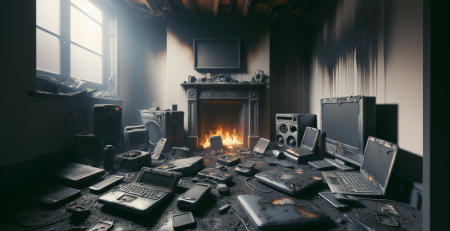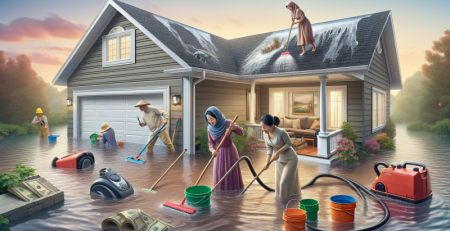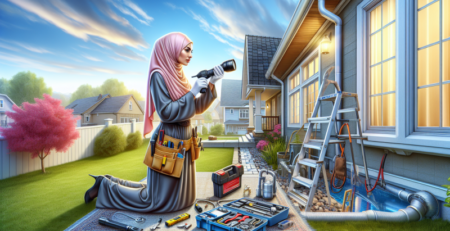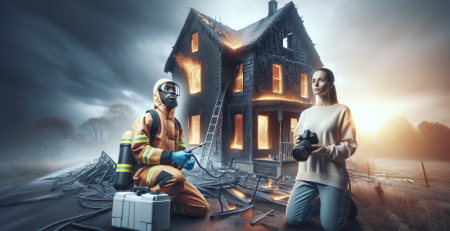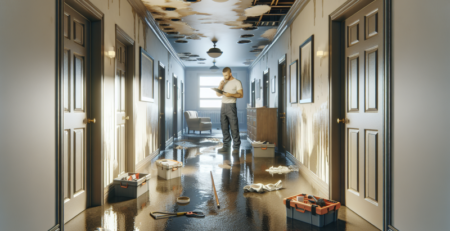How to Maintain Your Home After Restoration
Restoring your home after a disaster can be a daunting task. Whether you’ve faced water damage, mold issues, or fire damage, the journey to recovery is just the beginning. Once the restoration is complete, maintaining your home is crucial to ensure it remains safe, comfortable, and beautiful. In this guide, we’ll walk you through essential steps to maintain your home after restoration, ensuring you can enjoy your space without worry.
Understanding the Importance of Post-Restoration Maintenance
After a restoration project, many homeowners breathe a sigh of relief, thinking the hard work is done. However, maintaining your home is just as important as the restoration itself. Why? Because neglecting maintenance can lead to recurring issues that could have been easily prevented. For instance, if you’ve had water damage restoration in New Jersey, failing to monitor humidity levels can lead to mold growth, which can be both hazardous and costly to remediate.
Moreover, regular maintenance can help you identify potential problems before they escalate. Think of it like regular check-ups for your health; just as you wouldn’t skip a doctor’s appointment, you shouldn’t overlook your home’s needs. By staying proactive, you can save time, money, and stress in the long run.
Regular Inspections: Your First Line of Defense
One of the most effective ways to maintain your home post-restoration is through regular inspections. Schedule a thorough inspection of your property at least twice a year. During these inspections, look for signs of water damage, mold, or structural issues. If you notice any abnormalities, it’s essential to address them immediately. For instance, if you see water stains on your ceiling, it could indicate a leak that needs urgent attention.
Additionally, consider hiring IICRC certified experts for a professional assessment. These experts can provide insights that you might overlook and recommend necessary actions. If you’re in Central or Northern New Jersey, Kraus Restoration offers comprehensive inspection services to ensure your home remains in top shape. You can reach them at (973) 886-2021.
Humidity Control: Keeping Mold at Bay
Humidity is a silent enemy when it comes to maintaining a restored home. After a mold cleanup in New Jersey, it’s vital to keep humidity levels in check to prevent future mold growth. Ideally, indoor humidity should be between 30% and 50%. You can monitor humidity levels using a hygrometer, a simple device that measures moisture in the air.
If you find that your home tends to be humid, consider investing in a dehumidifier. This appliance can significantly reduce moisture levels, making your home less hospitable to mold spores. Additionally, ensure proper ventilation in areas prone to moisture, such as bathrooms and kitchens. Installing exhaust fans can help circulate air and reduce humidity.
Regular Cleaning: A Key to Longevity
Cleaning your home regularly is more than just a chore; it’s a vital part of maintaining your space after restoration. Dust, dirt, and debris can accumulate quickly, especially after a restoration project. Make it a habit to clean surfaces, vacuum carpets, and mop floors at least once a week. Pay special attention to areas that may have been affected by water or fire damage.
When cleaning, use non-toxic products to avoid introducing harmful chemicals into your home. If you’ve had fire damage repair in New Jersey, ensure that you clean soot and smoke residue thoroughly, as these can linger and affect air quality. For deep cleaning tasks, consider hiring professional restoration services that specialize in post-restoration cleaning. They have the tools and expertise to tackle tough jobs effectively.
Maintaining Your Home’s Exterior
Your home’s exterior is just as important as the interior when it comes to maintenance. After restoration, inspect your roof, gutters, and siding regularly. Look for any signs of damage or wear and tear. For instance, clogged gutters can lead to water pooling around your foundation, which can cause significant issues over time.
Additionally, ensure that your landscaping is well-maintained. Trim trees and bushes away from your home to prevent them from causing damage during storms. If you’ve had fire damage repair in New Jersey, consider using fire-resistant landscaping materials to reduce the risk of future incidents.
Emergency Preparedness: Be Ready for Anything
Even after restoration, it’s essential to be prepared for emergencies. Create an emergency plan that includes evacuation routes, emergency contacts, and a list of essential items to grab in case of a disaster. Keep a well-stocked emergency kit with supplies like water, non-perishable food, flashlights, and first-aid items.
Additionally, consider installing smoke detectors and carbon monoxide detectors throughout your home. Test these devices regularly to ensure they are functioning correctly. If you’ve experienced property damage restoration in New Jersey, having these safety measures in place can provide peace of mind and protect your home and loved ones.
Investing in Professional Services
Sometimes, maintaining your home requires more than just DIY efforts. Investing in professional restoration services can save you time and ensure that your home is maintained to the highest standards. Whether you need routine inspections, deep cleaning, or emergency services, having a reliable restoration company on speed dial is invaluable.
Kraus Restoration is a leader in water damage restoration in New Jersey, offering 24/7 emergency services and rapid response to any situation. Their team of IICRC certified experts is trained to handle various restoration needs, ensuring your home remains safe and comfortable. Don’t hesitate to reach out to them at (973) 886-2021 for any restoration or maintenance needs.
Documenting Your Home’s Condition
After restoration, it’s wise to document your home’s condition. Take photos of each room, focusing on areas that were restored. This documentation can be beneficial for insurance purposes or if you decide to sell your home in the future. Having a visual record of your home’s condition can also help you track any changes over time.
Additionally, keep receipts and records of any maintenance or repairs performed. This information can be valuable when discussing your home’s history with potential buyers or insurance agents. It shows that you’ve taken care of your property and can help you get the best value if you ever decide to sell.
Creating a Maintenance Schedule
To keep your home in top shape, create a maintenance schedule that outlines tasks to be completed monthly, quarterly, and annually. This schedule can include everything from changing air filters to cleaning gutters and checking smoke detectors. By having a clear plan, you can ensure that nothing falls through the cracks.
Consider using a digital calendar or a home maintenance app to set reminders for these tasks. This way, you’ll receive notifications when it’s time to tackle a specific job, making it easier to stay on top of your home’s needs. Remember, consistency is key when it comes to home maintenance!
Conclusion
Maintaining your home after restoration is an ongoing process that requires attention and care. By following the steps outlined in this guide, you can ensure your home remains a safe and comfortable haven for you and your family. Regular inspections, humidity control, thorough cleaning, and professional services are all essential components of effective home maintenance. Remember, your home is an investment, and taking care of it will pay off in the long run. If you need assistance, don’t hesitate to contact Kraus Restoration at (973) 886-2021 for expert help in Central and Northern New Jersey.
What should I do if I notice mold after restoration?
If you notice mold after restoration, it’s crucial to address it immediately. Contact a professional mold cleanup service, like Kraus Restoration, to assess the situation and remediate the issue safely.
How often should I inspect my home after restoration?
It’s recommended to inspect your home at least twice a year after restoration. However, if you notice any signs of damage or unusual conditions, conduct an inspection sooner.
Can I perform maintenance tasks myself?
Yes, many maintenance tasks can be performed by homeowners, such as cleaning and minor repairs. However, for complex issues or emergencies, it’s best to hire professionals.
What are the signs of water damage I should look for?
Signs of water damage include water stains on walls or ceilings, peeling paint, mold growth, and a musty odor. If you notice any of these, it’s essential to investigate further.
How can I prevent future water damage?
To prevent future water damage, ensure proper drainage around your home, maintain your gutters, and monitor humidity levels. Regular inspections can also help catch potential issues early.

